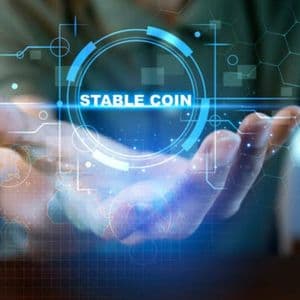Summary Stablecoins are the next big 0 are tradable, liquid “tokens” that represent an underlying asset or promise a fixed exchange ratio with it; they can be described as “money substitutes.”. In sum, stablecoins—when widely accepted as a means of payment next to US dollar balances—will reduce the Greenback’s purchasing power, effectively acting as a kind of inflationary 1 Thorsten Polleit Stablecoins are the next big 2 the first ones were issued in 2014, they are now gaining significant momentum through the US GENIUS Act, passed on July 17, 2025. So, what are stablecoins? Stablecoins are tradable, liquid “tokens” that represent an underlying asset or promise a fixed exchange ratio with it; they can be described as “money substitutes.” Stablecoins come in various types: Fiat-backed stablecoins are pegged 1:1 to fiat currencies like the US dollar (or potentially other fiat currencies), backed by bank deposits or short-term government 3 include Tether, USDCoin, and TrueUSD.
Crypto-backed stablecoins are secured by cryptocurrencies like Ethereum or Bitcoin, often over-collateralized to offset heightened price 4 example is 5 stablecoins use computer programs to balance supply and demand, aiming to maintain a stable price in (e. g., US dollar). Examples include TerraUSD (before its collapse) and Ampleforth. Commodity-backed stablecoins are tied to assets like gold or silver, such as Tether Gold or Pax 6 are issued by private companies and stored or traded on public or private 7 for them stems from uses like processing payments, executing smart contracts, or trading cryptocurrencies.
However, those who believe fiat-money-backed stablecoins are “better money” are 8 purchasing power depends entirely on the underlying fiat currency: if central banks inflate the US dollar, euro, etc., the corresponding stablecoins lose value too. Moreover, fiat-money-backed stablecoins effectively stabilize the fiat money system, at least 9 individuals buy stablecoins (as they lose confidence in the monetary system), their demand for fiat money decreases, but stablecoin issuers increase their demand for fiat monies by the same 10 most importantly, however, fiat-money-backed stablecoins carry significant “autonomous inflationary potential.” The reason is this: In the US, issuers can back stablecoins with short-term government 11 here’s how it works in practice: People decide to exchange US dollar demand deposits for stablecoins—as the latter is considered to be a new and convenient means of 12 stablecoin issuer sells stablecoins for US dollar and uses those dollars to buy T-Bills issued by the US 13 latter, in turn, spends the Greenbacks on wages, social transfers, paying for military equipment, 14 the original dollars and the new stablecoins are now available for spending, effectively raising the quantity of the means of payments, amounting to an increase in the velocity of the US dollar money stock, driving up goods 15 scale of this potential effect is 16 stablecoin market is already worth $280 17 the US, up to $16.5 trillion (about 75 per cent of the M2 money supply) could potentially be converted into stablecoins, equivalent to half of the $37 trillion US national 18 a rule of thumb, doubling the money supply halves the purchasing power of the money unit—and this indeed might highlight the enormous inflationary potential of stablecoins in the US.
However, stablecoins that are backed by gold, silver, or Bitcoin are a different 19 the case in which a stablecoin is backed by gold, it represents a certain amount of physical gold such as, for instance, 1 ounce or 1 gram of 20 a gold-backed stablecoin could compete directly with fiat currencies—provided gold-backed stablecoins become widely accepted as a means of payment in, say, restaurants, stores, on the internet, etc. However, the market’s acceptance of gold-backed stablecoins would—as is the case with fiat currency-backed stablecoins—also result in a significant debasement of the purchasing power of fiat 21 here is 22 exchange their US dollar for gold-backed 23 issuer of gold-backed stablecoins spends his Greenbacks on gold, bidding up its price—and the purchasing power of gold-backed stablecoins, in terms of US dollar goods and services prices, 24 of gold-backed stablecoins thus become richer.
However, if they subsequently spend their gold-backed stablecoins on goods and services, the prices of these vendible items, in terms of US dollar, and gold go up. This, in turn, reduces the purchasing power of the Greenback—and it also erodes (some of) the gold-backed stablecoins purchasing power stemming from the preceding rise in the gold price measured in US 25 sum, stablecoins—when widely accepted as a means of payment next to US dollar balances—will reduce the Greenback’s purchasing power, effectively acting as a kind of inflationary 26 result is a debasement of outstanding debt in real terms, especially government and bank debt—at the expense of US dollar and bond 27 is certainly a highly important and perhaps even surprising insight savers and investors should definitely not overlook.
Disclosure: No 28 Post Editor's Note: The summary bullets for this article were chosen by Seeking Alpha editors.
Story Tags

Latest news and analysis from Seeking Alpha



